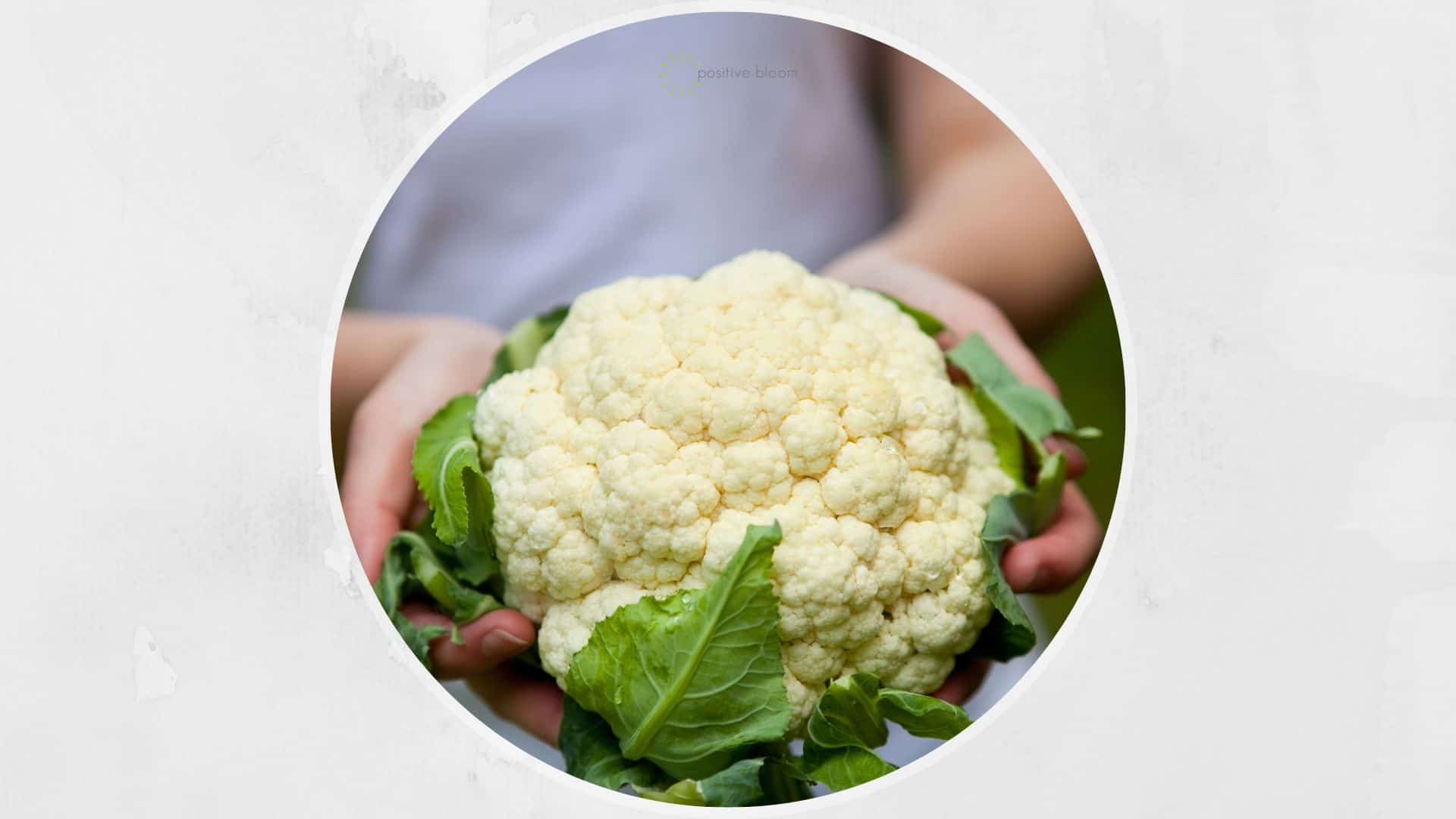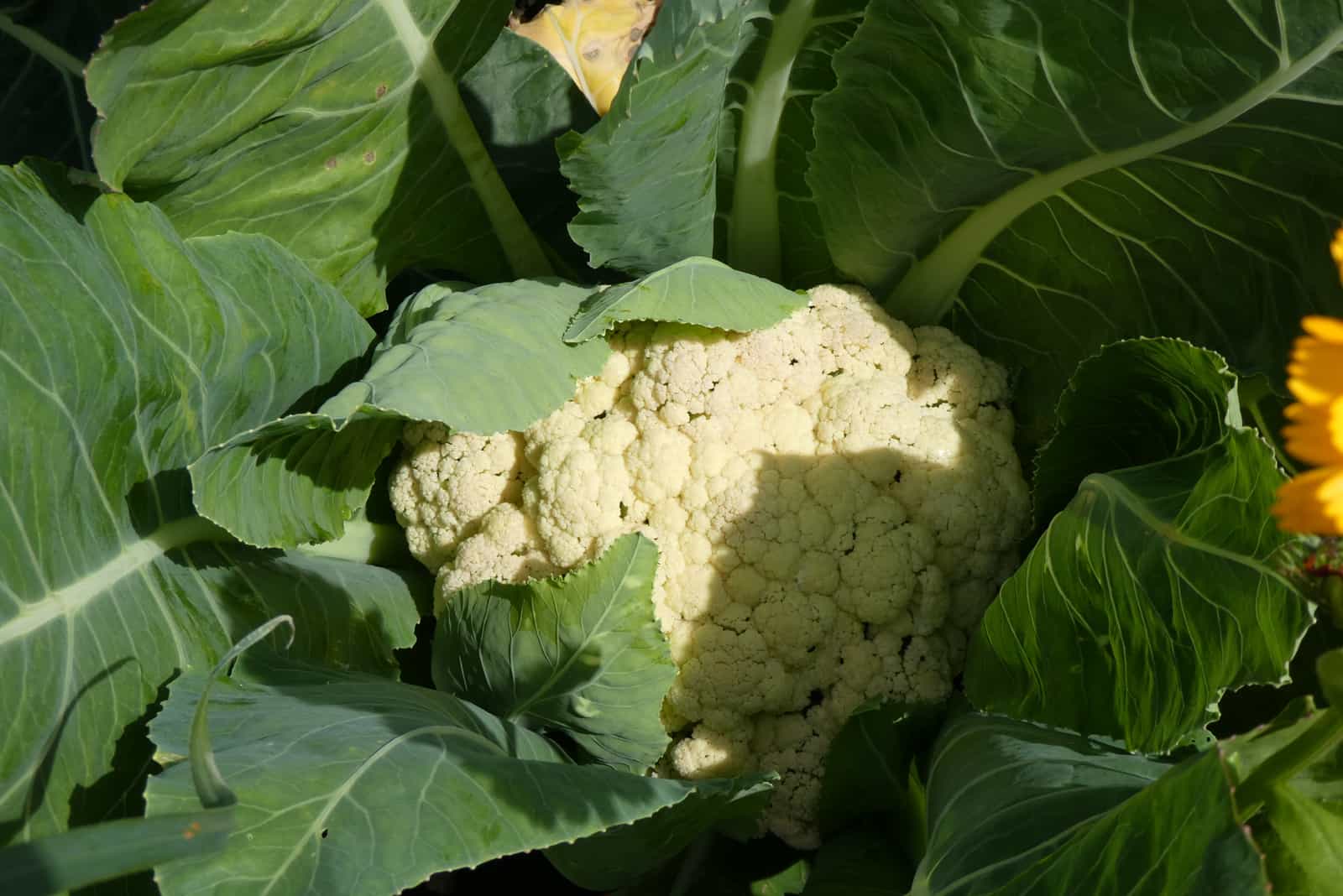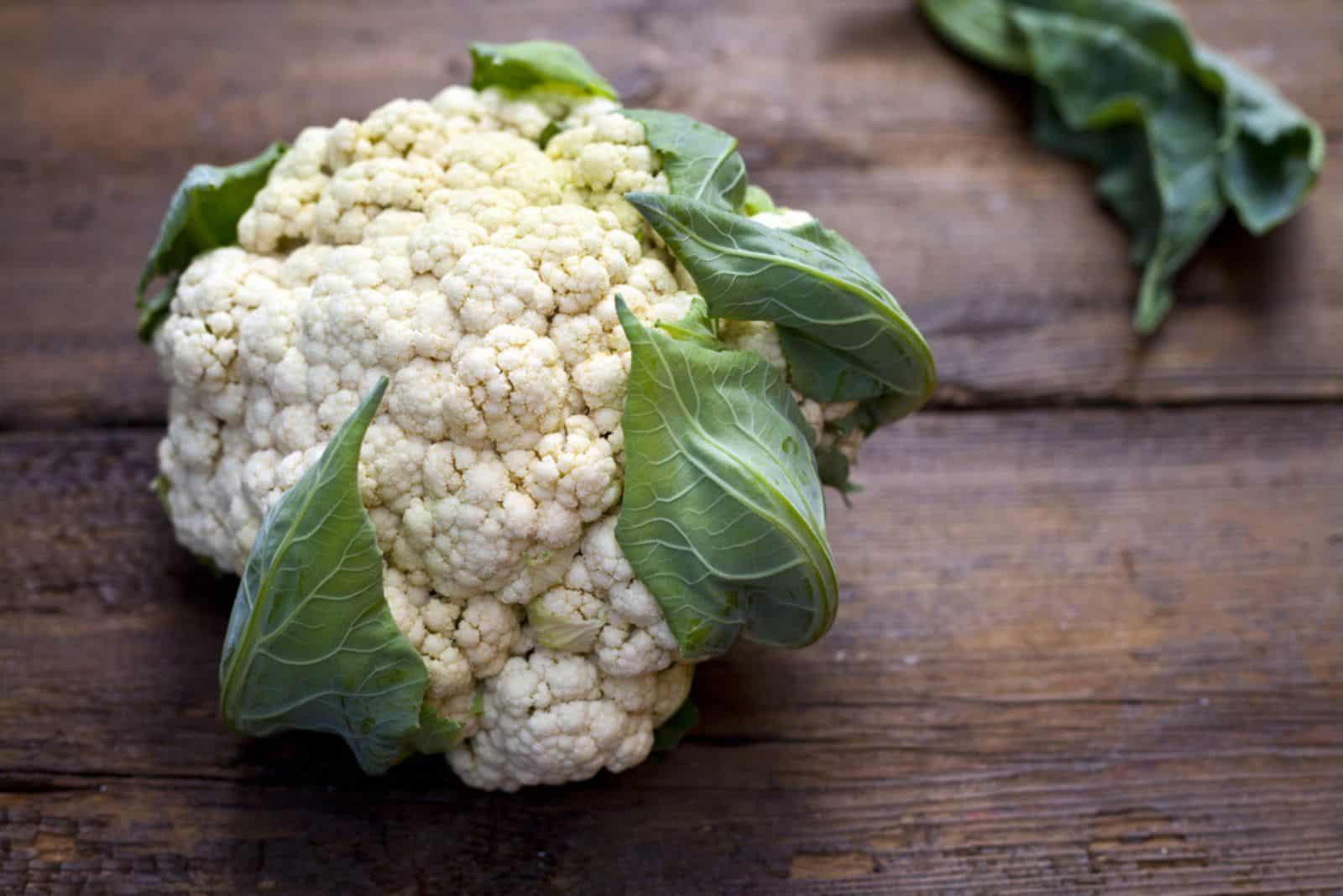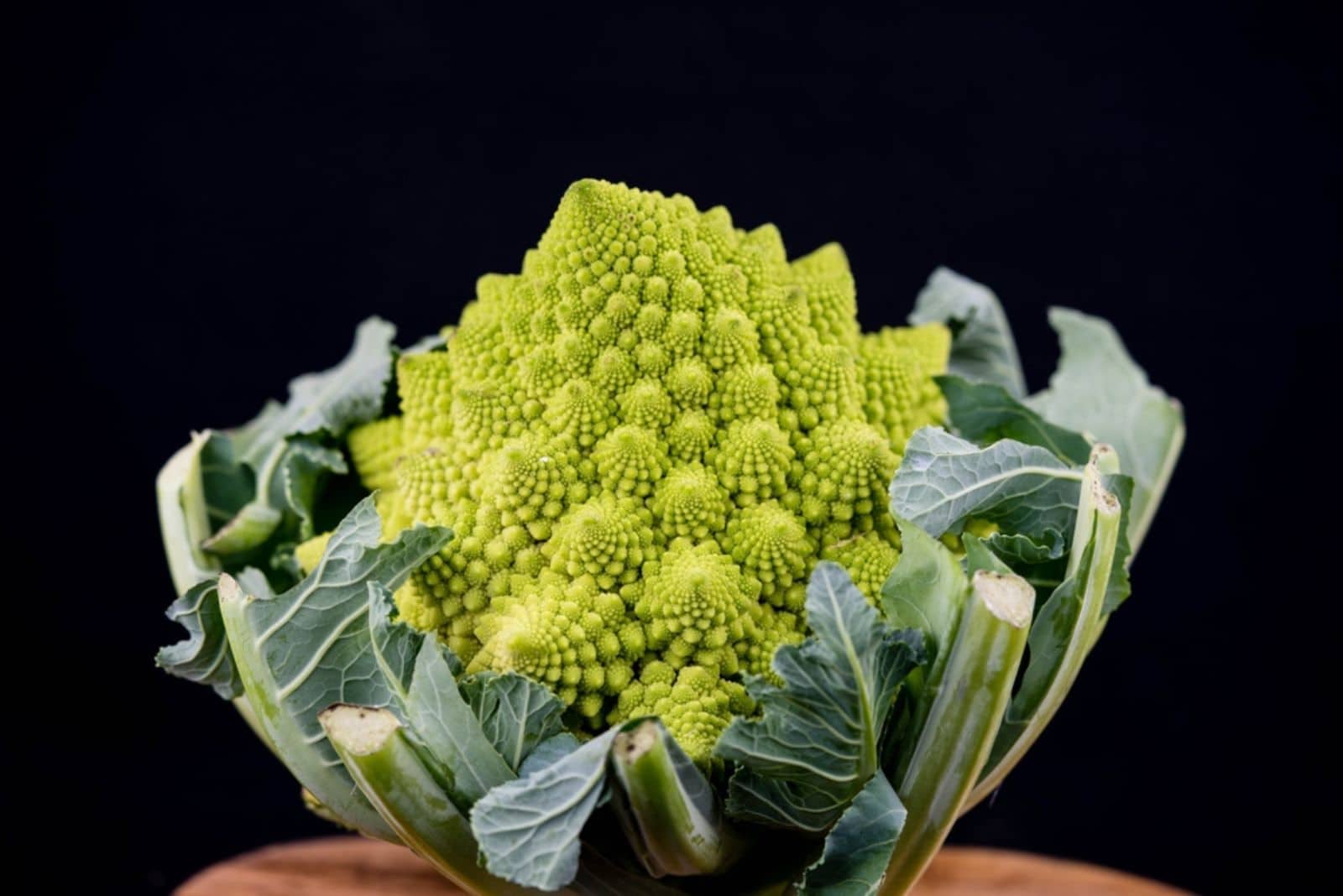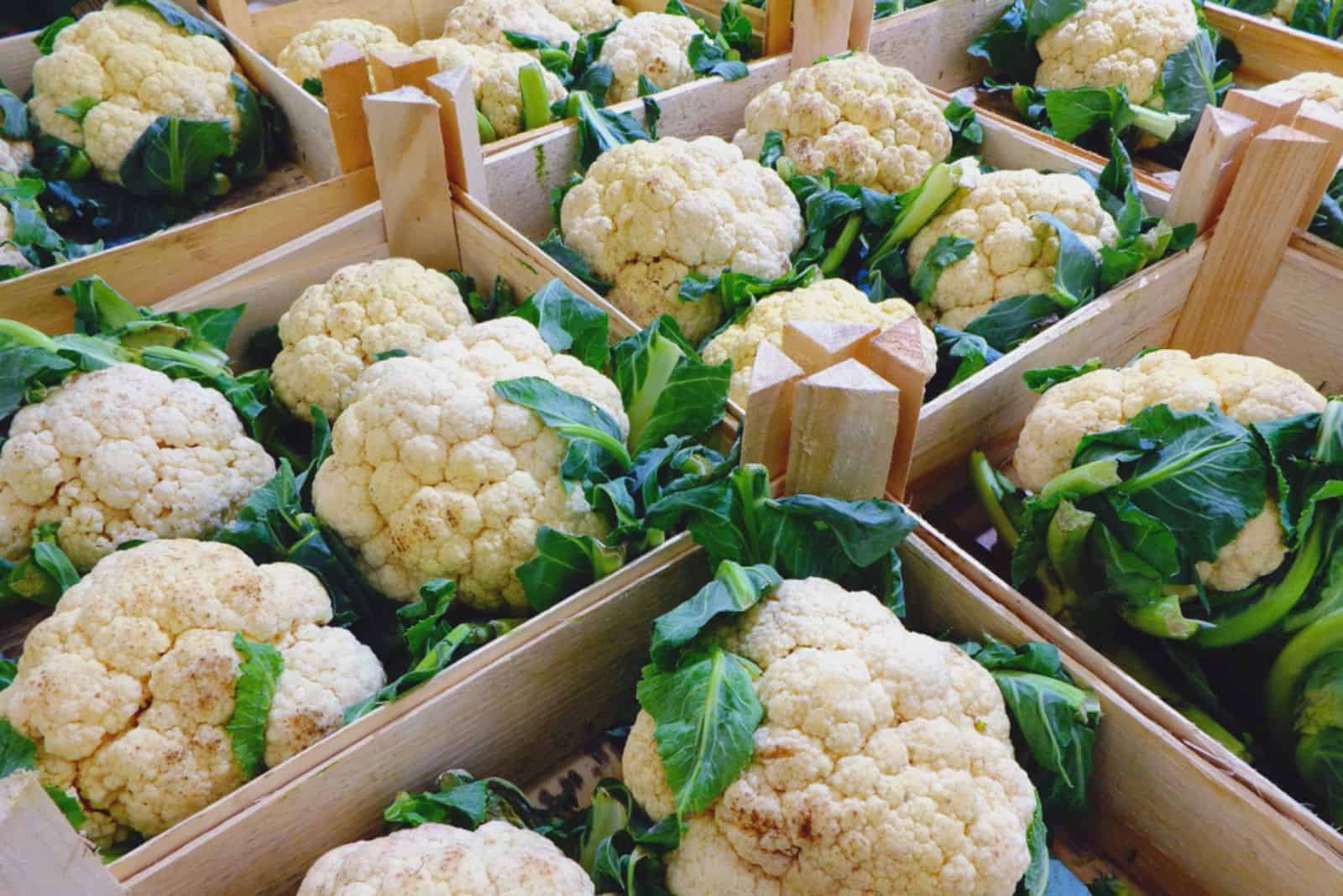When you go to a grocery store and pick up a large cauliflower head, you probably don’t wonder where it comes from. Or do you?
Well, the origin of this vegetable might surprise you. Even though we grow this plant from seeds in the modern day, it doesn’t mean that it has always been the way we think of it today.
Therefore, we’ll talk a bit about the history and origin of this plant, mention some of its amazing (and delicious) cultivars, and introduce a couple of its many health benefits.
Before we do all that, let’s look into its general specifics:
[table id=635 /]
Is Cauliflower Man-Made?
Yes, cauliflower is a vegetable made by humans, but don’t let that scare you. There are many other hybrid vegetables; even broccoli is made by man.
Technically, cauliflower is a hybrid of a wild cabbage, just like Brussels sprouts, kale, cabbage, kohlrabi, and broccoli.
But how did the human species make it?
It was made in a selective breeding process, which involves selecting (or choosing) plant parents based on their traits and reproducing them in order to create novel plants with those desirable properties.
But cauliflower has been in the world for ages, and we surely can’t imagine someone in the Middle Ages (or earlier) having a lab filled with modern-day equipment.
So, how did they do it?
How Was Cauliflower Made?
Cauliflower was made from the flower clusters of wild cabbage, or rather it is believed to have originated from broccoli or cabbage, but it takes 5-10 years or more until we notice some distinctive features.
It belongs to the species Brassica oleracea, which underwent a genome transformation sometime in the past and can produce different vegetables based on its pollination.
Since time immemorial, growers have wanted plants that yield better harvests, more delicious fruit, not as many seeds, plenty of edible flesh, etc.
All this has led to a selective breeding process which produces similar or completely different varieties of certain plants.
Cauliflower in particular appeared many centuries ago as a result of artificial selection, rather than a manipulation of genes in the lab.
Is Cauliflower GMO?
Even though cauliflower isn’t a vegetable that occurs naturally, it isn’t considered to be GMO.
It wasn’t made by recombining the DNA of various species, rather through a naturally occurring modification in a selective breeding process.
Brief History Of Cauliflower
We can find the first mention of cauliflower in Pliny’s Natural History (dating back to Roman times), where he described the so-called “cyma”, which could be an old ancestor of today’s broccoli.
In the Middle Ages, it found its way to Cyprus where Arab botanists believed it originated from.
This vegetable soon became more and more popular, and was introduced all over Europe by the end of the 16th century.
However, it took almost three hundred years for this vegetable to get to the United States. It came to the U.S. in the beginning of the 19th century, but it gained popularity in the 1920s. (That’s when large migrations took place, and many Italians came to the States along with newly-developed varieties.)
There are different types of cauliflower, some of which are even purple, and we’ll mention them in the following section.
Different Types Of Cauliflower
There are many different varieties of cauliflower, and we separate them into four large categories: Italian, Aisan, Northern European annual, and Northwest European biennial cauliflower.
Of course, regardless of the variety, the cauliflower growth cycle is the same, and understanding it can help you care for it properly and increase your overall yield.
Now, let’s look closer at some different varieties:
Italian cauliflower – This type is also known as Romanesco cauliflower or Broccoflower, and is a hybrid between broccoli and cauliflower. It has that signature cauliflower head, but is green, which makes it a special member of the Brassica family.
Asian cauliflower – Taishan, Fioretto, or Chinese cauliflower are all popular names for this variety. It slightly resembles broccoli and is more flavorful than regular cauliflower.
Northern European annual – This cauliflower is usually grown in North America and Europe (typically Germany), and growers harvest it in summer or fall.
Northwest European biennial – The Northwest European biennial cauliflower was first developed in France in the 1800s, and we typically harvest it in spring and fall.
Cauliflower Health Benefits
The health benefits of cauliflower are plentiful; it is rich in fiber, vitamins B6, C, and K, folates, manganese, potassium, etc.
It can help with weight loss because it doesn’t contain many calories, but is rich in water and fiber, making us feel full after eating.
It is packed with antioxidants, and protects from inflammatory diseases, lung, colon, prostate, and breast cancer, and even heart diseases, among other chronic ailments.
This vegetable even contains choline, a nutrient involved in processes that benefit our nervous system that keeps us safe from cholesterol build-up in our liver, reduces heart disease, risk of Alzheimer’s, etc.
Sulforaphane found in cauliflower may aid in lowering the blood pressure, protect from cancer, keep the kidneys safe from complications due to diabetes, etc.
FAQ
What are some hybrid vegetables in the Brassica family?
There are many hybrid vegetables, especially those from the species Brassica oleracea, and they include kohlrabi, collard greens, kale, cabbage, broccoli, cauliflower, Brussels sprouts, and kai-lan.
How long does it take to grow a cauliflower plant?
It typically takes 3-5 months to grow a cauliflower from seed, but it all depends on the weather conditions in your region and the variety you decide to grow.
This plant species is a cool-weather crop, and as such, you’ll be able to harvest it multiple times throughout spring and fall (or summer in colder climates).
What is the difference between GMO and hybrid plants?
GMO plants are a result of artificial modification of the plants’ genome, which is conducted in a lab.
Hybrid plants, on the other hand, occur due to the reproduction of two different species within the same family, but without recombination of their DNA. This selective breeding may take decades before the new plant exhibits desirable traits.
Final Thoughts
Cauliflower is man-made vegetable, but that doesn’t necessarily make it a GMO. It occurred as a result of crossbreeding in the Brassica family, and was first mentioned in Roman times.
However, it took centuries for it to be distributed all over Europe, and it only arrived in America in the 19th century.
Furthermore, there are four main types of this vegetable, and one of them even includes a purple cauliflower.
But regardless of its color, this vegetable is delicious and has many health benefits such as keeping us safe from all sorts of cancer, heart diseases, neurological ailments, etc.
Until next time!

